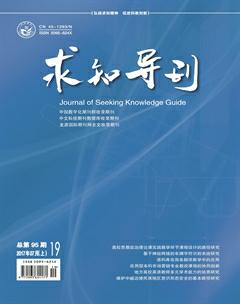一节读、听、说结合的英语语言运用课
苗慧
本課程设计的主题是“在信息输入、加工、输出过程中提高学生的英语语言运用能力,培养学生找读的阅读策略和听前预测、先听大意、通过听关键词猜测意义、边听边记笔记的听力策略”。本课程是一节语言运用课,采用读、听、说结合的教学方式。授课对象是普通班的学生,根据学生的实际英语能力,结合教学参考资料,对课本中的听力活动设计进行了调整,以降低听力难度,适合学生学习,并为“说”的活动做铺垫。
Unit1 Cultural Relics
Using language(Reading and listening; Speaking)
一、教学内容 Reading and listening; Speaking (P5-6)
二、教学目标
1.知识和技能目标
本节课结束时,学生今有以下收获。
(1)运用找读的方法在文章中查找出事实、观点和证据的定义。
(2)理解事实、观点和证据三个概念,判断所听到或读到的内容是事实还是观点。
(3)听懂并利用听关键词的技巧快速搜寻具体信息,提高获取信息和处理信息的能力。
(4)在讨论中学会使用询问和表达观点的功能用语。
(5)辨认和使用新词汇,如castle、evidence、explode、sailor、sink、maid。
2.情感目标
(1)通过学习有关琥珀屋的知识,深化学生对文化遗产的认识,增强保护文化遗产的意识。
(2)通过合作学习,学生体验成就感,发展合作精神和集体精神。
三、教学重点
(1)培养学生听前预测、先听大意、通过听关键词猜测意义、边听边记笔记的听力策略。
(2)培养学生说的能力,学会询问和表达观点。
四、教学难点
(1)如何指导学生在听力过程中听取信息并进行适当记录。
(2)围绕文化遗产以及事实和观点,培养学生的听说能力。
五、教学步骤(Total 40 mins)
Step 1 Lead in (5mins)
Activities:
(1)学生欣赏一段有关琥珀屋的视频,回忆所学过的关于琥珀屋的知识。
(2)Brainstorming:What do you know about the Amber Room? Then ask Ss which sentences they have said are facts, and which are opinions.
Intentions:引导学生激活已学过的有关琥珀屋的背景知识。同时复习词汇,如: in search of, at war, rare, valuable, treasure, remove, troop, wooden, doubt等,为接下来的活动做准备。
Step 2 Read passage1 (3mins)
Activities:
(1)Students scan passage1, and find out what a fact is, what an opinion is, and what evidence is.
(2)The teacher asks them to tell the difference between a fact and an opinion.
(3)The teacher shows them two examples to check whether they are facts or opinions.
Intentions: To enable students to tell the difference between a fact and an opinion.
Step 3 Read passage 2 (5mins)
Activities:
Students read passage 2 quickly, and search the information the man told about the Amber Room. Ss discuss to check their answers. Then focus on what he heard\ saw\believes, to make sure what are facts and what are opinions.
Intentions: To train the students the scanning ability and let them know when something happens,
what we see or hear happening are facts, but what we believe or think are opinions.
Step 4 Listen for the 1st time (6mins)
Activities:
Listen and Fill. Students listen to the material for the 1st time, meanwhile try to set down the
general information and “check your prediction”.
Intentions: To practise the students listening for the general information according to key words. And check the prediction.endprint
Step 5 Listen for the 2nd time (9mins)
Activities:
Students listen to PartA and PartB separately, and get some detailed information.
(1)Part A Listen, choose and sequence.
(2)Part B 信息转换,听前展示几幅图片,让学生用一两个词(组)描述图片,在此呈现已学的词汇,如maid, truck, wooden boxes, treasure, on fire, troop。并结合英文解释学习新词,如castle, explode, honey。听后让学生将这些图片排序。
(3)听后让学生根据所记笔记,简单复述所听内容。教师给出一些关键词,如during the war...one night...later...then...the next morning.
Intentions: To improve students listening skills and help them use different listening strategies.
训练学生关注人物、时间、地点和事件以了解细节。
Step6 Speaking (10mins)
Activities:
1. 每四人一组,每个人给出适当的答案
①Ask Ss to discuss: How can we know which eyewitness is most believable?②The teacher can give some expressions to help Ss discuss. eg. Do you know any idea about...? How do you know that? I think...is telling the truth, because...That cant be true, because...
2. 每组学生展示后,教师给予适当评价
Intentions: To improve students speaking skills and learn to discuss and act out their opinions.
Step 7 Enjoy pictures of cultural relics (1min)
Activities:配樂欣赏中外文化遗产的图片。
Intentions:再次升华学生情感,增强其保护文化遗产的意识。
Step 8 Homework (1min)
①Summarize the ideas for a fact or an opinion.② Please write a passage about your discussion.
Intentions: To help them review what they have learned in the class.
3.教学反思
(1)本课教学设计在进一步发展学生基本语言运用能力的同时,着重提高学生用英语获取信息、处理信息、分析和解决问题的能力。
(2)整堂课体现了“信息输入—信息加工—信息输出”的模式。设计的各个环节都是为提高学生的综合语言运用能力而服务的,学生能做到先“输入”(读和听)后“输出”(说),认知过程有序、合理。
(3)课堂设计将语言输入和语言输出紧密联系起来,将听说教学理论依据和教学实践结合起来,更好地培养了学生运用英语进行交际的能力。
(4)但同时也存在一些缺憾。如由于课堂时间有限,留给学生讨论话题和对话的时间不够充分。此外,由于学生听力能力上的差异,同样的听力策略,不同学生掌握的程度也不尽相同,对于程度较低的学生,还需要为他们提供更多、更系统的策略训练。
参考文献:
[1]中华人民共和国教育部.普通高中英语课程标准(实验稿)[M].北京:人民教育出版社,2003.
[2]王 蔷.英语教学法教程[M]. 北京:高等教育出版社,2006.
[3]刘 辉.在课堂教学中培养学生的听力策略——以一节听力预测猜策略教学课为例[J].中小学外语教学(中学篇),2008(7):32-34.
[4]曹刚阳.初中任务型听力活动的整体教学设计——以一节听力课为例[J].中小学外语教学,2009(7): 31-33.
[5]温爱英.“新目标”听力教学设计与教学现状分析及建议[J].课程·教材·教法,2010(5):60-65.
[6]郭锦辉.论英语语言课程设计中的需求分析[J].中北大学学报(社会科学版),2008,24(3):52-55.
[7]马 嵘.高职院校中外合作办学项目英语语言课程建设探究[J].中国电力教育,2014(24):57-58.
[8]杨秋娜.析工学结合背景下的英语语言课改革思路[J].河北能源职业技术学院学报,2011,11(2):86-87.
[9]李颖.浅谈中外合作办学英语语言课合作教学[J].华章,2013(24).
[10]赵志慧.语言视觉下高职高专英语语言课程教学研究[J].科技信息,2014(10):244-244.
[11]黄江云.基于多元智能理论的英语语言课堂教学研究[J].中国校外教育(旬刊),2014(S3):567.
[12]谷素华.英语语言课教学方法= Approaches to English language teaching as a foreign language[M].石家庄:河北人民出版社,2013.
[13]赵小燕.英语语言课程设计中的需求分析[J].读写算(教育教学研究),2012(94).
[14]李晓洁.建构有效的英语语言课堂[J].新校园(理论版),2011(12).
[15]乔春华.社会建构主义理论指导下的英语语言学课程教学[J].成都师范学院学报, 2009,25(10):101-103.
[16]李丹弟.基于动态评价理论的英语语言学课程评价模式研究[J].外语界,2015(6):19-25.
[17]康英华.英语语言学课程教学探析[J].赤峰学院学报(哲学社会科学版) ,2011(8):262-263
[18]黄永亮.《英语语言学》课程教学改革研究[J].咸阳师范学院学报,2007,22(6):93-94.
[19]吴文华.《创造课内外英语语言环境教学模式研究》结题报告[J].绥化学院学报,2003,23(3):91-95.endprint

